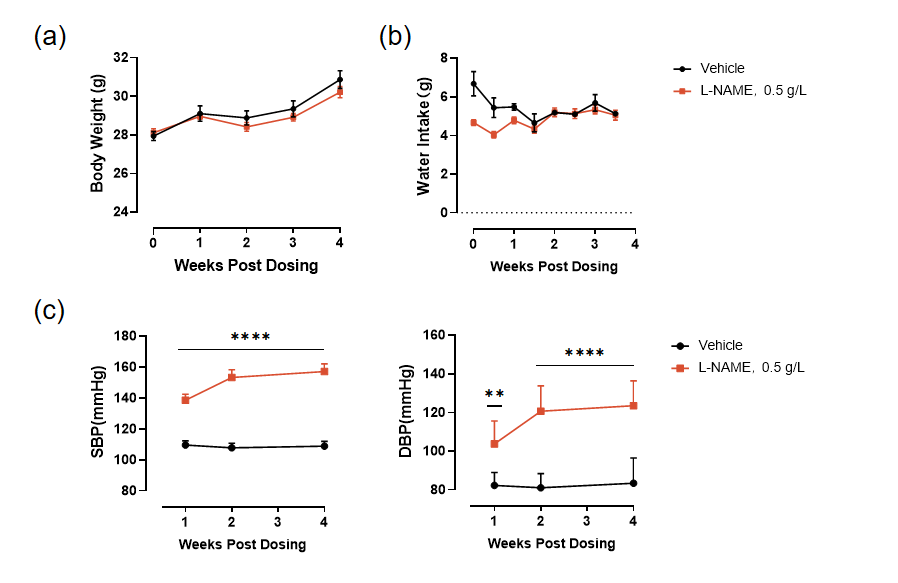Hypertension is a cardiovascular syndrome characterized primarily by elevated systemic arterial pressure, classified into primary hypertension and secondary hypertension. Primary hypertension accounts for over 90% of cases, with its etiology remaining unclear and associated with multifactorial interactions including genetic and environmental factors (e.g., high-salt diet, obesity, and mental stress). Secondary hypertension is caused by other underlying diseases. The pathogenesis of hypertension involves abnormalities in neural regulation, renal dysfunction, and vascular structural changes. Epidemiological studies indicate that the prevalence of hypertension increases with age, with a global prevalence rate of approximately 30%-40%.
L-NAME induces hypertension by competitively inhibiting nitric oxide synthase (NOS), thereby reducing the production of the vasodilator, nitric oxide (NO), leading to vasoconstriction and elevated blood pressure. L-NAME administered through drinking water reliably induces hypertension in mice, providing a valuable mouse model for the evaluation of potential therapeutics.
Study Design and Example Data
Typical Study Design

L-NAME elevates blood pressure in mice.

Figure 2. (a)Body weight. (b) Water intake. (c) The changes in systolic and diastolic blood pressure. (Data were presented as Mean±SEM, n=8 per group,**, ****denoted p<0.01, p<0.0001, respectively).

